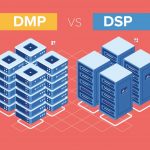Table of Content
These days, buying and selling online ad impressions happens in less than a blink of an eye. Just less than 7-8 years ago, it would taken a few days to weeks to do the same thing. This is made possible thanks to introduction of Demand Side-Platform (DSP) and Supply-side Platform (SSP) that has made the entire process much more efficient.
One of the most frequently asked questions within the advertising world is “what is a DSP and what does it do?”
DSP is an important tool for modern day online digital marketers. DSP makes it possible for marketers to buy ad spaces from a myriad of publishers via ad exchanges and ad networks while able to perform sophisticated targeting of consumers without needing to deal with the different intermediaries. Some DSPs are equipped with machine learning capabilities that can further assist with suggesting or even directly participate in making decision to purchase ad spaces based on the marketing objectives set by a marketer. Some example DSPs include Adobe, AdForm, Amobee, Google’s Display & Video 360, Knorex XPO, The Trade Desk, Media Math amongst others to name a few.
How does a Demand-side Platform (DSP) work?
The marketer uploads their designs and writes the ad contents, while simultaneously also indicate the allocated marketing budget and the ideal target market and audience, if applicable. The DSP goes on to choose the best opportunity from the pool of ad spaces and secures the ideal one for the advertiser. The DSP continues securing ad spaces programmatically (i.e. machine to machine negotiation or coordination algorithmically) on behalf of the marketer until the marketing budget is exhausted.
Components of a DSP
To fully understand how a DSP works, it’s crucial to learn what it comprises of. It includes the following.
Integration
For a DSP to operate, it has to be combined with other supply sources like ad spaces and SSPs. Every firm has a unique integration process, but there are a few basics of the process. The first step is mostly research and setting up the platform.
The second step is to implement and develop the idea. And the last step is to test the DSP and the new integration. Many firms now expect a DSP to be integrated with supporting cross-media with at least 1 million queries per second (QPS).
Bidder
This part is responsible for placing bids of the inventory on behalf of the advertisers during RTB (real-time bidding). This is one of the significant parts of the DSP. Ad spaces are sold fast and efficiently when they are there.
Ad server
Some DSPs use external services, while others have their servers. An ad server helps in displaying the ads to the buyer as well as store the creatives. Ad exchanges help in optimizing, retargeting, tracking, and reporting all media purchase opportunities. The ad server has been a critical part of the DSP for a decade, and it will continue to be the best tool in campaign management.
Campaign Tracker
This part records every detail of the campaign such as clicks, spends, impressions and then passes all the info to the reporting platform. Through the help of the campaign tracker, marketers using DSPs can now monitor conversions, retention rate and advertise viewability. And other essential metrics to analyze the metrics required to optimize a campaign.
Profile Data
The user interest databases stores data about web visitors such as their preferences, based on their activities online. Like, what are they viewing, clicking or buying? Anything they’re doing online. This is essential for optimizing campaigns.
User interface
This is a dashboard where a marketer spends their time designing, optimizing and managing their campaign.
Why do media buyers need DSPs?
- Wide outreach. Most DSPs are integrated with international ad exchanges, which means marketers can reach a big audience.
- Premium targeting. Profile data is captured in a DMP in most circumstances, and DSPs are integrated with DMPs which assist in ad verification, ad targeting, and optimization. The most important role it plays in helping advertisers reach the right audience.
- The choice of inventory. The most crucial thing about every campaign is advertising to the right group of people. The DSPs allows media buyers to describe the kind of market they are targeting beforehand. As a result, it’s possible to showcase the products and services to their potential leads.
- Campaign analytics. DSPs assists advertisers in the tracking of their campaigns in real-time. It combines the information of all the campaigns running in different platforms together and reports it.
Takeaways
Gone is the marketing era when you had to wait for a salesperson in a briefcase to come to negotiate the ad spaces at their highest voices. Now you can save both your time and resources by embracing technology.
DSPs help you bid for your best ad impressions, by simply submitting a description of what you need.












